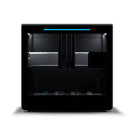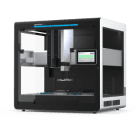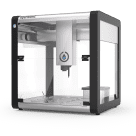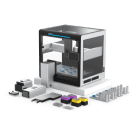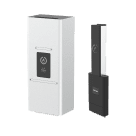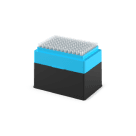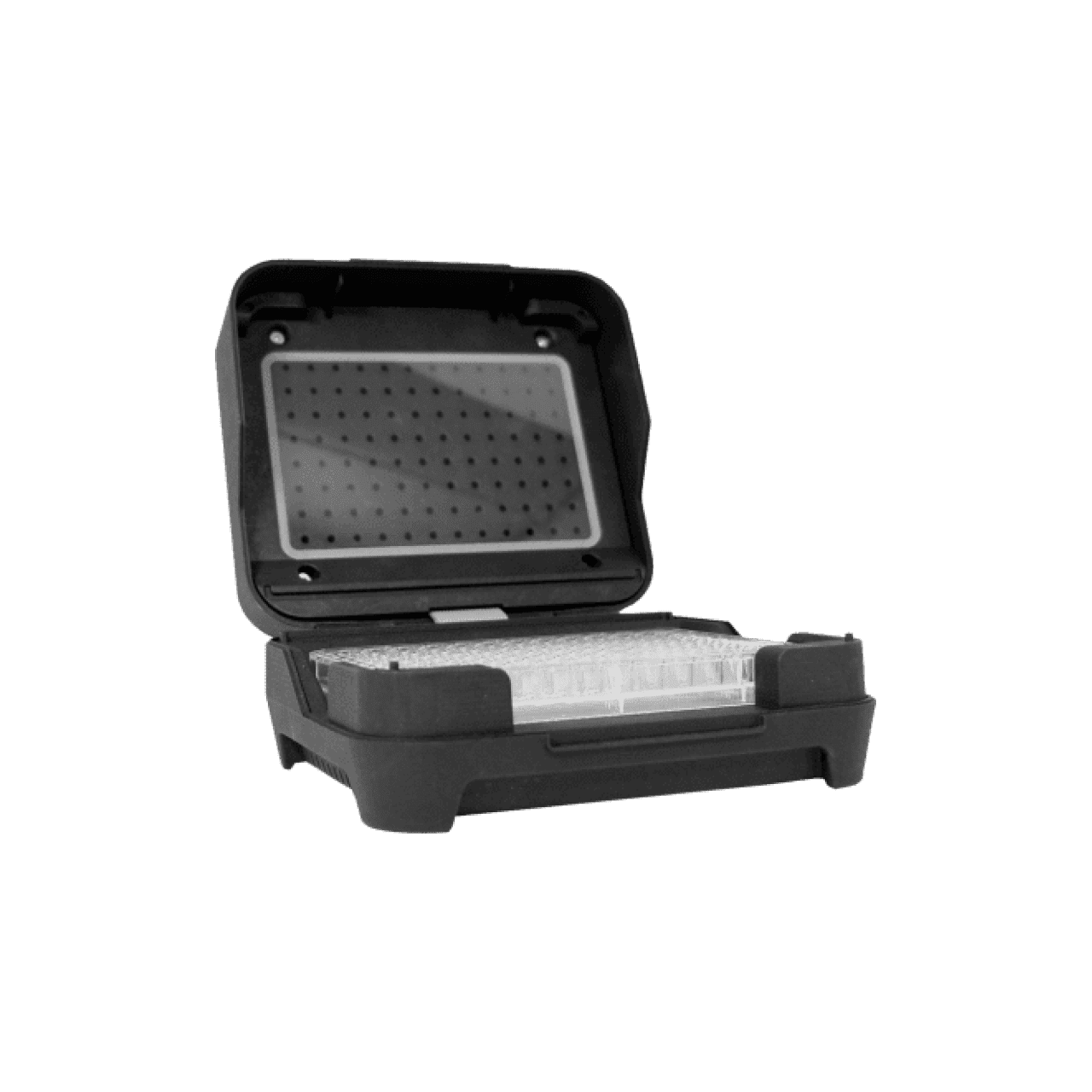Loading Pipettes¶
When writing a protocol, you must inform the Protocol API about the pipettes you will be using on your robot. The ProtocolContext.load_instrument() function provides this information and returns an InstrumentContext object.
As noted above, you call the load_instrument() method to load a pipette. This method also requires the pipette’s API load name, its left or right mount position, and (optionally) a list of associated tip racks. Even if you don’t use the pipette anywhere else in your protocol, the Opentrons App and the robot won’t let you start the protocol run until all pipettes loaded by load_instrument() are attached properly.
API Load Names¶
The pipette’s API load name (instrument_name) is the first parameter of the load_instrument() method. It tells your robot which attached pipette you’re going to use in a protocol. The tables below list the API load names for the currently available Flex and OT-2 pipettes.
Pipette Model |
Volume (µL) |
API Load Name |
|
|---|---|---|---|
Flex 1-Channel Pipette |
1–50 |
|
|
5–1000 |
|
||
Flex 8-Channel Pipette |
1–50 |
|
|
5–1000 |
|
||
Flex 96-Channel Pipette |
1–200 |
|
|
5–1000 |
|
||
Pipette Model |
Volume (µL) |
API Load Name |
|---|---|---|
P20 Single-Channel GEN2 |
1-20 |
|
P20 Multi-Channel GEN2 |
|
|
P300 Single-Channel GEN2 |
20-300 |
|
P300 Multi-Channel GEN2 |
|
|
P1000 Single-Channel GEN2 |
100-1000 |
|
See the OT-2 Pipette Generations section if you’re using GEN1 pipettes on an OT-2. The GEN1 family includes the P10, P50, and P300 single- and multi-channel pipettes, along with the P1000 single-channel model.
Loading Flex 1- and 8-Channel Pipettes¶
This code sample loads a Flex 1-Channel Pipette in the left mount and a Flex 8-Channel Pipette in the right mount. Both pipettes are 1000 µL. Each pipette uses its own 1000 µL tip rack.
from opentrons import protocol_api
requirements = {"robotType": "Flex", "apiLevel":"2.27"}
def run(protocol: protocol_api.ProtocolContext):
tiprack1 = protocol.load_labware(
load_name="opentrons_flex_96_tiprack_1000ul", location="D1")
tiprack2 = protocol.load_labware(
load_name="opentrons_flex_96_tiprack_1000ul", location="C1")
left = protocol.load_instrument(
instrument_name="flex_1channel_1000",
mount="left",
tip_racks=[tiprack1])
right = protocol.load_instrument(
instrument_name="flex_8channel_1000",
mount="right",
tip_racks=[tiprack2])
If you’re writing a protocol that uses the Flex Gripper, you might think that this would be the place in your protocol to declare that. However, the gripper doesn’t require load_instrument! Whether your protocol requires a gripper is determined by the presence of ProtocolContext.move_labware() commands. See Moving Labware for more details.
Loading a Flex 96-Channel Pipette¶
This code sample loads the Flex 96-Channel Pipette. Because of its size, the Flex 96-Channel Pipette requires the left and right pipette mounts. You cannot use this pipette with 1- or 8-Channel Pipette in the same protocol or when these instruments are attached to the robot. Load the 96-channel pipette as follows:
def run(protocol: protocol_api.ProtocolContext):
pipette = protocol.load_instrument(
instrument_name="flex_96channel_1000"
)
In protocols specifying API version 2.15, also include mount="left" as a parameter of load_instrument().
New in version 2.15.
Changed in version 2.16: The mount parameter is optional.
Loading OT-2 Pipettes¶
This code sample loads a P1000 Single-Channel GEN2 pipette in the left mount and a P300 Single-Channel GEN2 pipette in the right mount. Each pipette uses its own 1000 µL tip rack.
from opentrons import protocol_api
metadata = {"apiLevel": "2.27"}
def run(protocol: protocol_api.ProtocolContext):
tiprack1 = protocol.load_labware(
load_name="opentrons_96_tiprack_1000ul", location=1)
tiprack2 = protocol.load_labware(
load_name="opentrons_96_tiprack_1000ul", location=2)
left = protocol.load_instrument(
instrument_name="p1000_single_gen2",
mount="left",
tip_racks=[tiprack1])
right = protocol.load_instrument(
instrument_name="p300_multi_gen2",
mount="right",
tip_racks=[tiprack1])
New in version 2.0.
Adding Tip Racks¶
The load_instrument() method includes the optional argument tip_racks. This parameter accepts a list of tip rack labware objects, which lets you to specify as many tip racks as you want. You can also edit a pipette’s tip racks after loading it by setting its InstrumentContext.tip_racks property.
Note
Some methods, like configure_nozzle_layout(), reset a pipette’s tip racks. See Partial Tip Pickup for more information.
The advantage of using tip_racks is twofold. First, associating tip racks with your pipette allows for automatic tip tracking throughout your protocol. Second, it removes the need to specify tip locations in the InstrumentContext.pick_up_tip() method. For example, let’s start by loading loading some labware and instruments like this:
def run(protocol: protocol_api.ProtocolContext):
tiprack_left = protocol.load_labware(
load_name="opentrons_flex_96_tiprack_200ul", location="D1")
tiprack_right = protocol.load_labware(
load_name="opentrons_flex_96_tiprack_200ul", location="D2")
left_pipette = protocol.load_instrument(
instrument_name="flex_8channel_1000", mount="left")
right_pipette = protocol.load_instrument(
instrument_name="flex_8channel_1000",
mount="right",
tip_racks=[tiprack_right])
Let’s pick up a tip with the left pipette. We need to specify the location as an argument of pick_up_tip(), since we loaded the left pipette without a tip_racks argument.
left_pipette.pick_up_tip(tiprack_left["A1"])
left_pipette.drop_tip()
But now you have to specify tiprack_left every time you call pick_up_tip, which means you’re doing all your own tip tracking:
left_pipette.pick_up_tip(tiprack_left["A2"])
left_pipette.drop_tip()
left_pipette.pick_up_tip(tiprack_left["A3"])
left_pipette.drop_tip()
However, because you specified a tip rack location for the right pipette, the robot will automatically pick up from location A1 of its associated tiprack:
right_pipette.pick_up_tip()
right_pipette.drop_tip()
Additional calls to pick_up_tip will automatically progress through the tips in the right rack:
right_pipette.pick_up_tip() # picks up from A2
right_pipette.drop_tip()
right_pipette.pick_up_tip() # picks up from A3
right_pipette.drop_tip()
New in version 2.0.
See also Building Block Commands and Complex Commands.
Adding Trash Containers¶
The API automatically assigns a trash_container to pipettes, if one is available in your protocol. The trash_container is where the pipette will dispose tips when you call drop_tip() with no arguments. You can change the trash container, if you don’t want to use the default.
One example of when you might want to change the trash container is a Flex protocol that goes through a lot of tips. In a case where the protocol uses two pipettes, you could load two trash bins and assign one to each pipette:
left_pipette = protocol.load_instrument(
instrument_name="flex_8channel_1000", mount="left"
)
right_pipette = protocol.load_instrument(
instrument_name="flex_8channel_50", mount="right"
)
left_trash = load_trash_bin("A3")
right_trash = load_trash_bin("B3")
left_pipette.trash_container = left_trash
right_pipette.trash_container = right_trash
Another example is a Flex protocol that uses a waste chute. Say you want to only dispose labware in the chute, and you want the pipette to drop tips in a trash bin. You can implicitly get the trash bin to be the pipette’s trash_container based on load order, or you can ensure it by setting it after all the load commands:
pipette = protocol.load_instrument(
instrument_name="flex_1channel_1000",
mount="left"
)
chute = protocol.load_waste_chute() # default because loaded first
trash = protocol.load_trash_bin("A3")
pipette.trash_container = trash # overrides default
New in version 2.0.
Changed in version 2.16: Added support for TrashBin and WasteChute objects.
Liquid Presence Detection¶
Liquid presence detection is a pressure-based feature that allows Opentrons Flex pipettes to detect the presence or absence of liquids in a well, reservoir, tube, or other container. It gives you the ability to identify, avoid, and recover from liquid-related protocol errors.
When detecting liquid, the pipette slowly moves a fresh, empty tip downward from the top of the well until it contacts the liquid. The downward probing motion can take anywhere from 5 to 50 seconds, depending on the depth of the well and how much liquid it contains. For example, it will take much less time to detect liquid in a full flat well plate than in an empty (or nearly empty) large tube.
You can enable this feature for an entire protocol run or toggle it on and off as required. Consider the amount of time automatic detection will add to your protocol. If you only need to detect liquid infrequently, use the corresponding building block commands instead. Automatic liquid presence detection is disabled by default.
Pipette Compatibility¶
Liquid presence detection works with Flex 1-, 8-, and 96-channel pipettes only. 1-channel pipettes have one pressure sensor. The 8-channel pipette pressure sensors are on channels 1 and 8 (positions A1 and H1). The 96-channel pipette pressure sensors are on channels 1 and 96 (positions A1 and H12). Other channels on multi-channel pipettes do not have sensors and cannot detect liquid.
Enabling Globally¶
To automatically use liquid presence detection, add the optional Boolean argument liquid_presence_detection=True to ProtocolContext.load_instrument() in your protocol. The robot will check for liquid on every aspiration. You can also turn this feature off and back on again later in a protocol. This example enables liquid presence detection on the 8-channel pipette used in the sample protocol at the top of the page.
right = protocol.load_instrument(
instrument_name="flex_8channel_1000",
mount="right",
tip_racks=[tiprack2],
liquid_presence_detection=True
)
Note
Accurate liquid detection requires fresh, dry pipette tips. Protocols using this feature must discard used tips after an aspirate/dispense cycle and pick up new tips before the next cycle. Complex commands may include aspirate steps after a tip is already wet. When global liquid detection is enabled, use building block commands to ensure that your protocol picks up a tip immediately before aspiration.
The API will not raise an error during liquid detection if a tip is empty but wet. It will raise an error if liquid detection is active and your protocol attempts to aspirate with liquid in the tip.
Let’s take a look at how all this works. With automatic liquid detection enabled, tell the robot to pick up a clean tip, aspirate 100 µL from a reservoir, and dispense that volume into a well plate:
right.pick_up_tip()
right.aspirate(100, reservoir["A1"]) # checks for liquid
right.dispense(100, plate["A1"])
Liquid detection takes place prior to aspiration. Upon detecting a liquid, the pipette stops, raises itself above the liquid’s surface, and then aspirates according to your protocol. Checking for a liquid adds time to your protocol run, so be aware of that before using it. If Flex doesn’t detect liquid, it raises an error and stops the protocol until the problem is resolved.
However, aspiration isn’t required for liquid level detection. Three standalone methods, detect_liquid_presence(), require_liquid_presence(), and measure_liquid_height(), let you add liquid detection to a protocol with or without aspirating. Automatic detection is the same as calling require_liquid_presence() before every aspiration. See Detect Liquids, Require Liquids, or Measure Liquids for details.
New in version 2.20.
Activating and Deactivating¶
You can turn liquid presence detection off and on throughout a protocol. To turn it off, set pipette.liquid_presence_detection=False at the point in a protocol where it needs to be disabled, usually between picking up a new tip and aspirating a liquid. This overrides the global argument, liquid_presence_detection=True that we set on load_instrument(). Let’s try this after picking up a new tip.
right.pick_up_tip()
right.liquid_presence_detection = False # Turns off liquid presence detection.
right.aspirate(100, reservoir["A2"]) # Aspirates immediately.
From now on, the pipette will not check for liquid until you turn this feature back on.
To reactivate, set liquid_presence_detection=True at the point later in the protocol where it needs to be enabled, usually between picking up a new tip and aspirating a liquid.
right.pick_up_tip()
right.liquid_presence_detection = True # Turns on liquid presence detection.
right.aspirate(100, reservoir["A3"]) # Detects liquid before aspirating.
The robot will continue to check for liquid until this feature is disabled again, or an empty well is detected (and the robot raises an error), or the protocol completes.
New in version 2.20.

